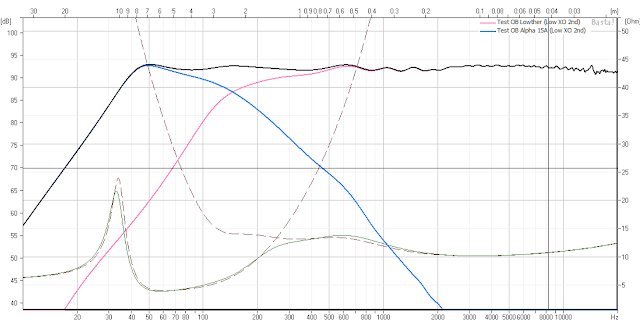Combined with the room gain of the speaker, I am able to rune the Lowther without too much inline attenuation, beyond what the notch and crossover has already provided. Looking a 3R to equalise. However, with an L-pad, I should be able to dial that in as required.
Not sure if the above makes complete sense, except that once used in the model with the values, it produces a flat +/- 1 dB response, which is a pretty good start.
Further tweaking as yielding another set of values, this is primarily affecting the Lowther.
XO
100 uF and 4.7 mH
Notch
3.3 R, 1.5 mH and 68 uF
 |
| Baseline 2nd order passive crossover |
Pretty much where it was before. It should also be noted that the values are not the conventional formulas. If we did that, the following is the predicted response.
Crossovers are at 200 Hz for Alpha and 250 Hz for Lowther. The notch filter is the same as above.
Lowther = 28 uF and 14.5 mH
Which will end up using 27 uF and 15 mH
Alpha 15a = 9.4 mH and 68 uF
Which will end up using 10 mH and 68 uF
 |
| Conventional 2nd order passive crossover |
The benefit of the above is that the series capacitor is smaller for the Lowther and the series inductor is smaller for the Alpha. At the expense of the higher parallel inductor/capacitor value.
More tweaking to do. But at this moment, it feels like the 'baseline' option is the right option to go with.






